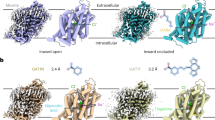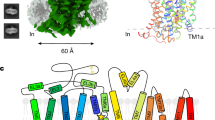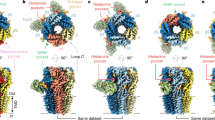Abstract
FOR some years considerable attention has been focused on the inhibitory action of γ-aminobutyric acid (GABA). One of the first systems used to demonstrate this property involved inhibition of the spontaneous discharge of the slowly adapting stretch receptor neurone of the crayfish1,2. This bio-assay procedure has been used to investigate the inhibitory characteristics of many other compounds2–4, but none reported to date has proved more active than GABA. A number of aliphatic amino- and guanidino-acids have, however, shown activity approaching that of GABA, and pre-requisites for activity appear to be the presence in the molecule of an acidic and a suitably separated basic function. Such general characteristics are to be found among the catecholamines. The inhibitory characteristics of these substances were therefore investigated.
This is a preview of subscription content, access via your institution
Access options
Subscribe to this journal
Receive 51 print issues and online access
$199.00 per year
only $3.90 per issue
Buy this article
- Purchase on SpringerLink
- Instant access to full article PDF
Prices may be subject to local taxes which are calculated during checkout
Similar content being viewed by others
References
Florey, E., Arch. Intern. Physiol., 62, 33 (1954).
Kuffler, S. W., and Edwards, C., J. Neurophysiol., 21, 589 (1958).
Edwards, C., and Kuffler, S. W., J. Neurochem., 4, 19 (1959).
Bazemore, A. W., et al., J. Neurochem., 1, 334 (1957).
Elliott, K. A. C., and Florey, E., J. Neurochem., 1, 181 (1956).
Van Harreveld, A., Proc. Soc. Exp. Biol. Med., 34, 428 (1936).
Author information
Authors and Affiliations
Rights and permissions
About this article
Cite this article
McGEER, E., McGEER, P. & McLENNAN, H. Inhibitory Properties of the Catecholamines. Nature 192, 563 (1961). https://doi.org/10.1038/192563a0
Issue date:
DOI: https://doi.org/10.1038/192563a0



